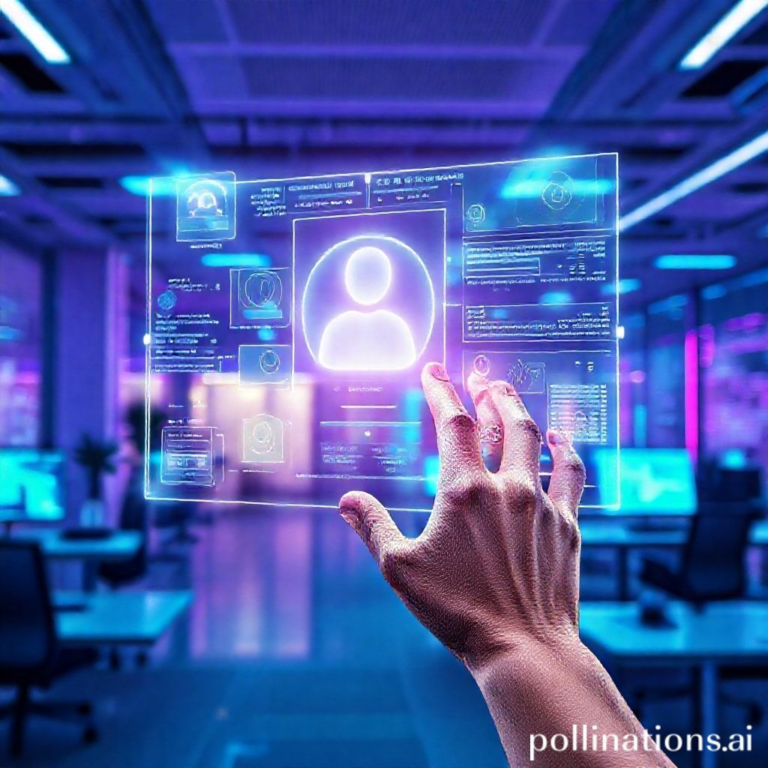
body {
font-family: Arial, sans-serif;
line-height: 1.6;
margin: 20px;
}
h2 {
color: #333;
margin-top: 30px;
}
h3 {
color: #555;
margin-top: 20px;
}
p {
margin-bottom: 15px;
}
AI Trends & Tools: What’s Hot Now?
Artificial intelligence (AI) is no longer a futuristic fantasy; it’s a present-day reality rapidly transforming industries and reshaping how we live and work. From self-driving cars to personalized recommendations, AI is already deeply embedded in our daily lives. But the field is evolving at breakneck speed, making it crucial to stay informed about the latest trends and tools. So, buckle up as we dive into the exciting world of AI and explore what’s hot right now!
The Hottest AI Trends in 2024 and Beyond
1. Generative AI: The Creative Explosion
Generative AI is arguably the most talked-about trend in the AI landscape. These models, like ChatGPT, DALL-E 2, and Midjourney, can generate new content – text, images, audio, and even code – based on the data they’ve been trained on. The possibilities are virtually endless. Think of crafting marketing copy in seconds, creating stunning visuals for your website without hiring a designer, or even composing original music.
Example: Let’s say you need a blog post about “The Benefits of Meditation.” Instead of spending hours writing it yourself, you could use ChatGPT to generate a draft. While you’ll still need to review and refine the content, it significantly reduces the initial effort and time investment.
The ethical considerations surrounding generative AI, such as copyright infringement and the spread of misinformation, are also being actively debated and addressed. Expect to see more sophisticated tools for detecting AI-generated content and regulations aimed at responsible AI development.
2. AI-Powered Automation: Streamlining Everything
Automation has been around for a while, but AI is taking it to a whole new level. AI-powered automation goes beyond simple rule-based tasks. It can learn from data, adapt to changing circumstances, and make intelligent decisions, freeing up human employees to focus on more strategic and creative work.
Example: In customer service, AI-powered chatbots can handle routine inquiries, resolve simple issues, and escalate complex cases to human agents. This reduces wait times, improves customer satisfaction, and allows human agents to focus on providing personalized support for more challenging problems.
Robotic Process Automation (RPA) combined with AI is also gaining traction. This allows for the automation of even more complex and nuanced business processes, leading to significant efficiency gains.
3. Edge AI: Bringing Intelligence Closer to the Data
Edge AI refers to running AI models directly on devices, such as smartphones, sensors, and IoT devices, rather than relying on cloud servers. This offers several advantages, including reduced latency, improved privacy, and enhanced reliability, especially in areas with limited or unreliable internet connectivity.
Example: Consider a self-driving car. It needs to process vast amounts of data from its sensors in real-time to make critical decisions. Relying solely on cloud processing would introduce unacceptable delays. Edge AI allows the car to process data locally, ensuring a faster and more responsive driving experience.
Edge AI is also crucial in applications like smart manufacturing, where real-time analysis of sensor data can enable predictive maintenance and optimize production processes.
4. Responsible AI: Ethics and Governance Take Center Stage
As AI becomes more pervasive, the ethical implications of its use are receiving increasing attention. Responsible AI focuses on developing and deploying AI systems in a way that is fair, transparent, accountable, and unbiased. This includes addressing issues like algorithmic bias, data privacy, and the potential for job displacement.
Example: Imagine an AI system used for loan applications. If the system is trained on biased data, it might unfairly deny loans to certain demographic groups. Responsible AI practices aim to identify and mitigate such biases, ensuring that the system makes fair and equitable decisions.
Expect to see more regulations and frameworks emerge to guide the development and deployment of responsible AI systems. Companies are also investing in tools and techniques for auditing AI models and ensuring their alignment with ethical principles.
5. AI-Driven Cybersecurity: A Constant Arms Race
Cybersecurity threats are becoming increasingly sophisticated, and AI is playing a crucial role in both defending against and perpetrating these attacks. AI-powered cybersecurity solutions can detect and respond to threats more quickly and effectively than traditional methods.
Example: AI can analyze network traffic patterns to identify anomalies that might indicate a cyberattack. It can also automate the process of patching vulnerabilities and responding to security incidents.
However, attackers are also leveraging AI to develop more sophisticated malware and phishing campaigns. This creates a constant arms race, requiring cybersecurity professionals to stay ahead of the curve by adopting the latest AI-powered defense mechanisms.
Essential AI Tools to Watch
1. TensorFlow: Google’s Open-Source Powerhouse
TensorFlow is a widely used open-source machine learning framework developed by Google. It provides a comprehensive set of tools and libraries for building and deploying AI models, particularly deep learning models. It’s highly versatile and supports various programming languages, including Python and JavaScript.
2. PyTorch: The Deep Learning Favorite
PyTorch is another popular open-source machine learning framework, known for its flexibility and ease of use. It’s particularly favored by researchers and developers working on deep learning applications. Its dynamic computation graph makes it easier to debug and experiment with complex models.
3. scikit-learn: The Machine Learning Swiss Army Knife
Scikit-learn is a Python library that provides a wide range of machine learning algorithms, including classification, regression, clustering, and dimensionality reduction. It’s a great starting point for anyone new to machine learning and offers a user-friendly interface for building and evaluating models.
4. OpenAI API: Accessing Cutting-Edge AI
The OpenAI API provides access to a suite of powerful AI models, including GPT-3 and DALL-E 2. This allows developers to easily integrate these models into their applications without having to train them from scratch. It’s a great way to leverage the latest advancements in AI for tasks like natural language processing, image generation, and code completion.
5. Dataiku: The End-to-End AI Platform
Dataiku is an end-to-end AI platform that enables data scientists and business users to collaborate on building and deploying AI solutions. It provides a visual interface for data preparation, model building, and model deployment, making it easier for non-technical users to participate in the AI development process.
Conclusion
The world of AI is constantly evolving, and staying informed about the latest trends and tools is essential for anyone looking to leverage its power. Generative AI, AI-powered automation, edge AI, responsible AI, and AI-driven cybersecurity are just some of the key trends shaping the future of AI. By understanding these trends and exploring the tools available, you can unlock new opportunities and drive innovation in your own field. So, embrace the power of AI and get ready for a future where intelligence is seamlessly integrated into every aspect of our lives!






